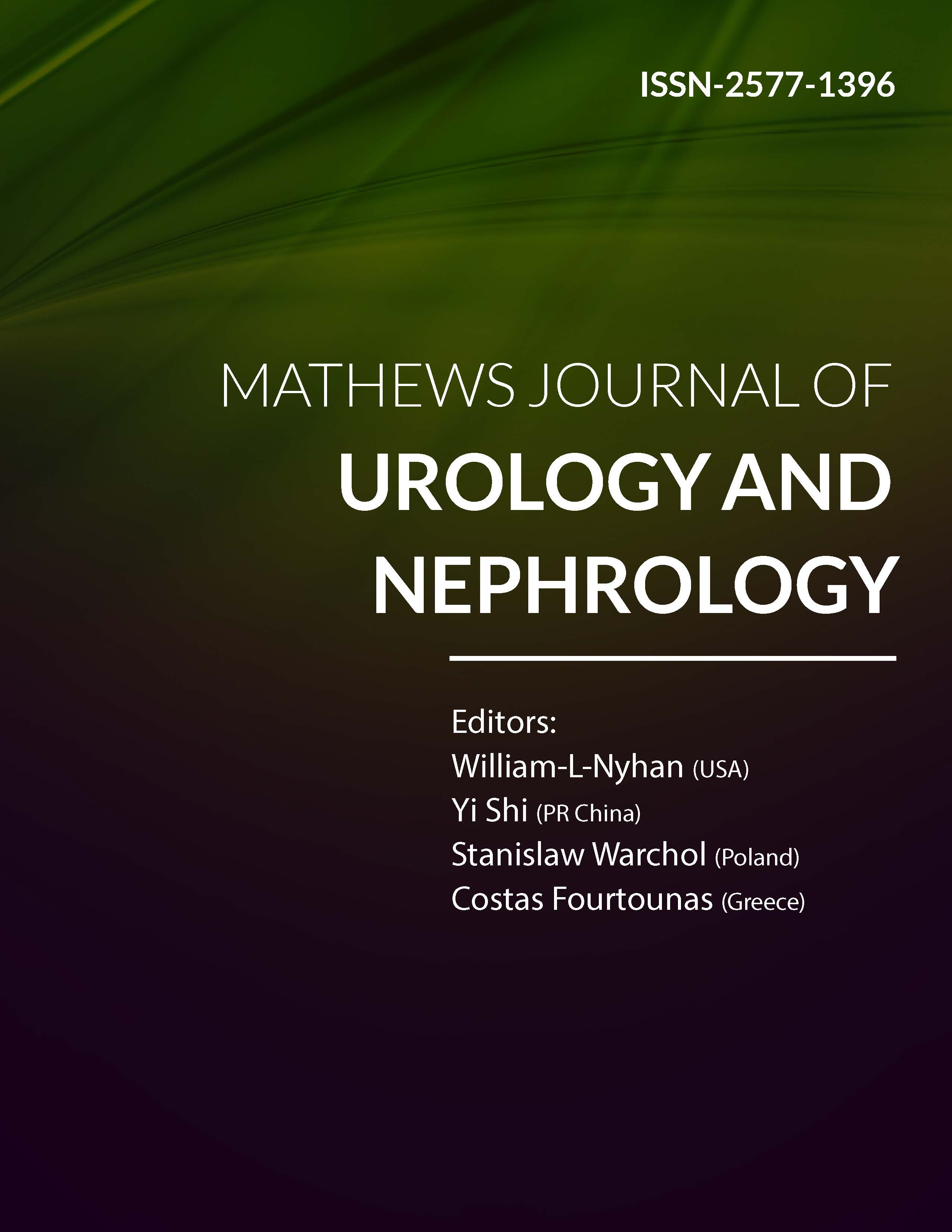
Information Links
Previous Issues Volume 2, Issue 1 - 2018
Does Immunohistochemical CD47 Staining Intensity Predict Prognozis of Renal Cell Carcinoma?
Eymen Gaze1,Engin Kaya2,Nesrin Turhan3,Metin Yığman4,Mehmet Emin Şirin5,Cavit Ceylan6,Öner Odabaş6
Corresponding Author: Engin Kaya, Gulhane Training and Research Hospital, Department of Urology, Ankara,Turkey, Tel: +00903123045607; Email: [email protected]
Received Date: 18 May 2018
Accepted Date: 01 Jun 2018
Published Date: 06 Jun 2018
Copyright © 2018 Kaya E
Citation: Gazel E, Kaya E, Turhan N, Yigman M, et all. (2018). Does Immunohistochemical CD47 Staining Intensity Predict Prognozis of Renal Cell Carcinoma. Mathews J Urol Nephrol 2(1): 007.
ABSTRACT
Introduction-Purpose : As for all cancer types, many biomarkers have been identified for renal cell carcinoma (RCC) as well. These biomarkers have been used to investigate the correlation between prognosis, tendency to metastasis and response given by advanced stage patients to treatment. In this retrospective study, in which the immunohistochemical staining intensity of CD47 was compared to the tumor stage and its histopathological features in patients underwent surgery due to renal mass, it was aimed to find whether CD47 could be used as a indicator in either one of diagnosis, follow-up and treatment processes. We believe that our study will contribute to the literature, since there have been no studies on the relationship between RCC and CD47 until today
Material-Method: In this study, pathology specimens of 110 patients who underwent radical nephrectomy and whose tumor pathologies were compatible with RCC were retrospectively examined. These pathology preparations were stained with CD47 using immunohistochemical technique and their staining intensities were examined.Their demographic data such as age and sex was found using clinical database. Parameters such as tumor diameter, capsule invasion, vascular invasion and lymph node involvement were found using pathology results reported after surgery. Patients were divided into groups as those who have clear cells and those who have non-clear cells (papillary and chromophobe); those with a tumor size smaller than 4cm, between 4-7 cm and bigger than 7cm; those with a fuhrman grade of 1-2 or 3-4; according to presence of capsular invasion, vascular invasion, lymph node involvement, and distant metastasis; those with local (T1-2-3) or advanced stage (T4 and/or N1,M1) cancer; weak stained (staining grade 0-1) and strong stained (2-3) according to CD47 staining intensity. In our study, Fischer's exact chi-square test was used in order to test the distribution of categorical variables among groups. Kruskal Wallis variance analysis was used in order to investigate differences of continuous variables between groups and the groups that creates the difference were identified using multiple comparison tests. In order to summarize the results of the study, median (minimum and maximum) and percentages were used for continuous variables. The limit of significance was p=0.05.
Findings:It has been found that 83 (75.5%) of the specimens were stained weak and 27 (24.5%) of the specimens were stained strong with CD47. A comparison between CD47 staining intensities of tumor tissue and non-tumor tissue taken from the same kidney has shown that although tumor tissue was stained stronger than non-tumor tissue, the statical analysis of this situation has shown that these two groups showed a 92.4% similarity in terms of staining patterns (confidence interval 95%). It has been found that non-clear cell group stained significantly stronger than clear cell group (p< 0.001). A significant relationship could not be found between CD47 staining intensity and large tumor diameter, presence of capsular invasion, relationship could not be found between CD47 staining intensity and large tumor diameter, presence of capsular invasion, vascular invasion or distant metastasis, which are known to be poor prognostic factors for RCC. Specimens belonged to patients with lymph node involvement stained strongly and this difference was statistically significant (p=0.02). Tumor specimens belonged to advanced stage patients stained significantly strong with CD47 compared to patients with local disease (p=0.04). A significant relationship was found between CD47 staining intensity and Fuhrman Nuclear Grade, which is thought to be the most important poor prognostic factor after tumor stage for RCC (p=0.009). Conclusion: In order to consider CD47 as a prognostic factor in renal cell cancer, there is a need for large scale prospective studies in which the survival of patients is presented.
KEYWORDS
Renal Cell Cancer; CD47; Biomarker; Prognosis.